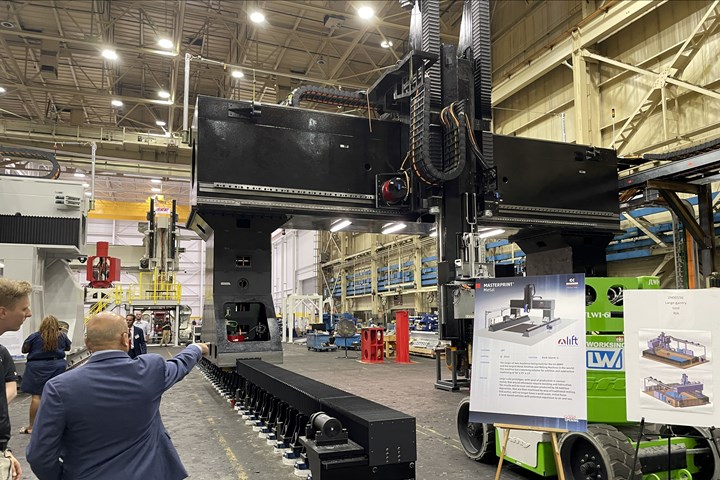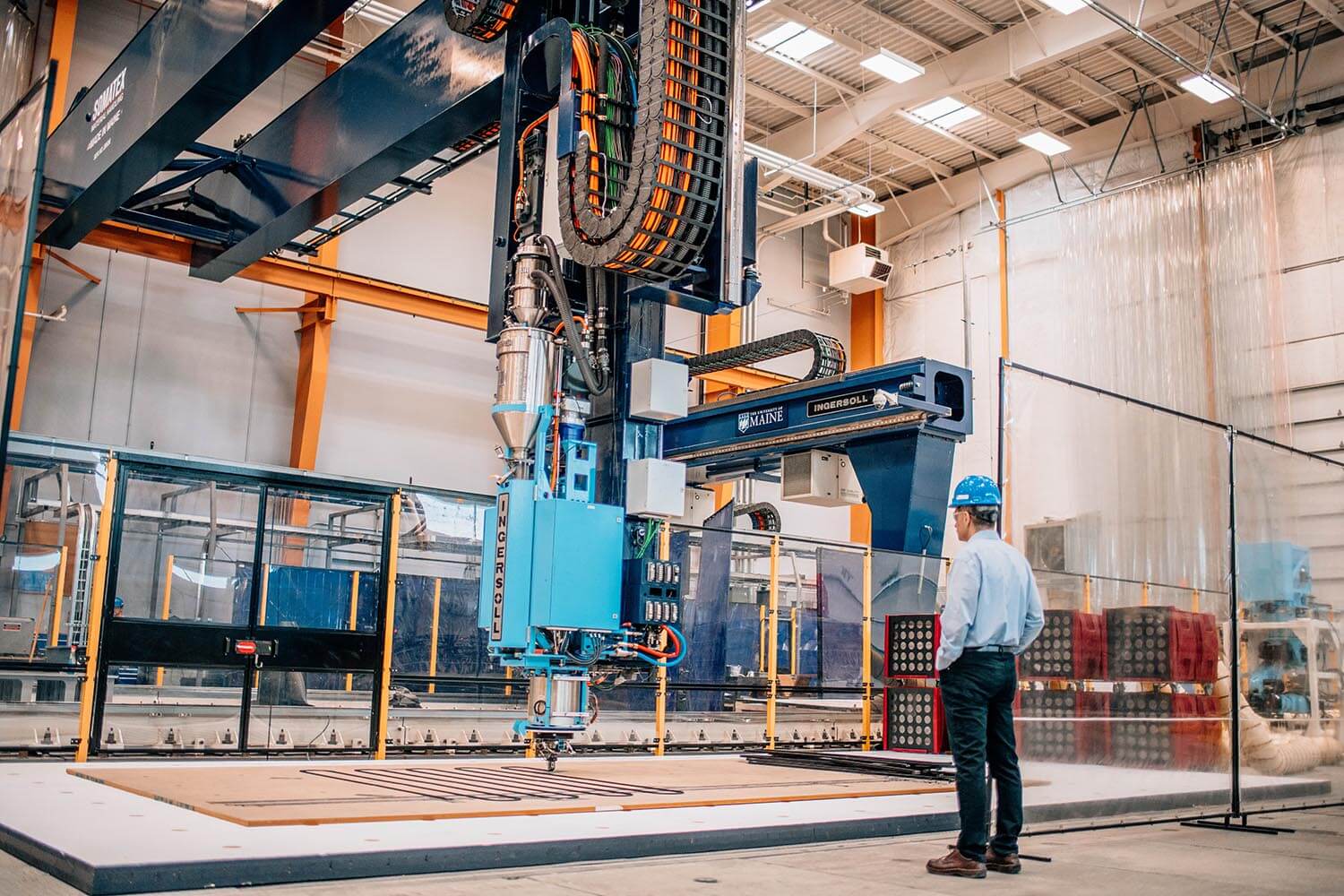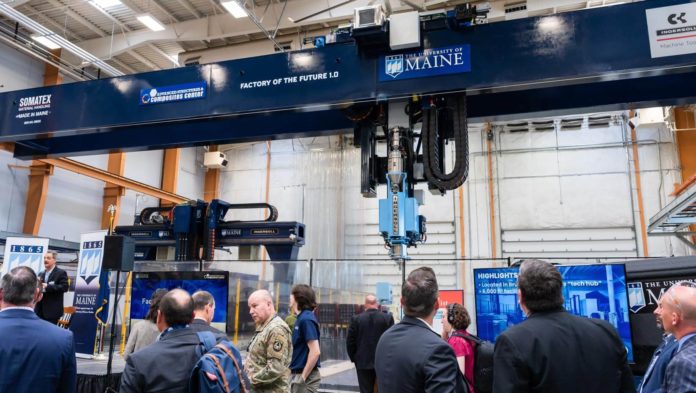With the ability to create a house in less than 80 hours, the University of Maine has announced the biggest polymer 3D printer in the world, a technique that is expected to completely transform the building industry. In addition to being a scientific marvel, this invention offers promise for solving the housing crisis everywhere, especially in Pakistan. Let’s have a closer look at this ground-breaking feat of marvel unveiled.
What’s The BIG Deal?
With the capacity to print items up to 96 feet long, 32 feet wide, and 18 feet high, the printer known as Factory of the Future 1.0 (FoF 1.0) is impressive in and of itself. Impressively, it can print up to 500 pounds per hour at its remarkable pace. However, the consequences for cheap housing and environmentally friendly building go far beyond its scale and pace.

Benefits Of Such A Huge Scale 3D Printer
When talking about the sheer capability of this machine, the benefits are unimaginable. Here are a couple of benefits of using this 3D Printer:
- Speedy Construction: A single home built with traditional methods might take many months to finish. This time, the FoF 1.0 promises a significant reduction, with a basic one-story home delivered in around 80 hours. For nations like Pakistan, where the need for housing exceeds supply by a wide margin, this capacity for quick building is revolutionary.
- Cost-Effectiveness: Building is more affordable because to 3D printing’s large labour and material waste reductions. This might result in poor countries building more homes with less resources, further taxing their budgets to address the housing crisis.
- Design Flexibility: Unmatched design freedom is provided by 3D printing, which makes it feasible to create intricate architectural details that would be difficult or impossible to accomplish using conventional techniques. This might result in more customised dwellings that meet a range of requirements and interests.
- Environmental Impact: One of the main industries contributing to greenhouse gas emissions worldwide is building. The FoF 1.0 places an emphasis on biobased resources, such as wood leftovers, which may help new construction have a lower carbon footprint. This encourages a greener approach to construction and is in line with international efforts to prevent climate change.

Why This Could Be A Game-Changer For 3D Printing?
Pakistan, like many countries, faces a significant housing shortage. The ability to quickly and affordably construct homes could alleviate this issue, providing shelter for thousands who currently lack adequate housing.
The anticipation for this technology is palpable. People are eager for solutions that offer speed, affordability, and sustainability in one package. The FoF 1.0 represents a hopeful future where technology meets humanity’s most basic needs.
Stay tuned for more tech news like this; this is your soon-to-be favorite friendly neighborhood techie, Zayaan, Signing Off!






































